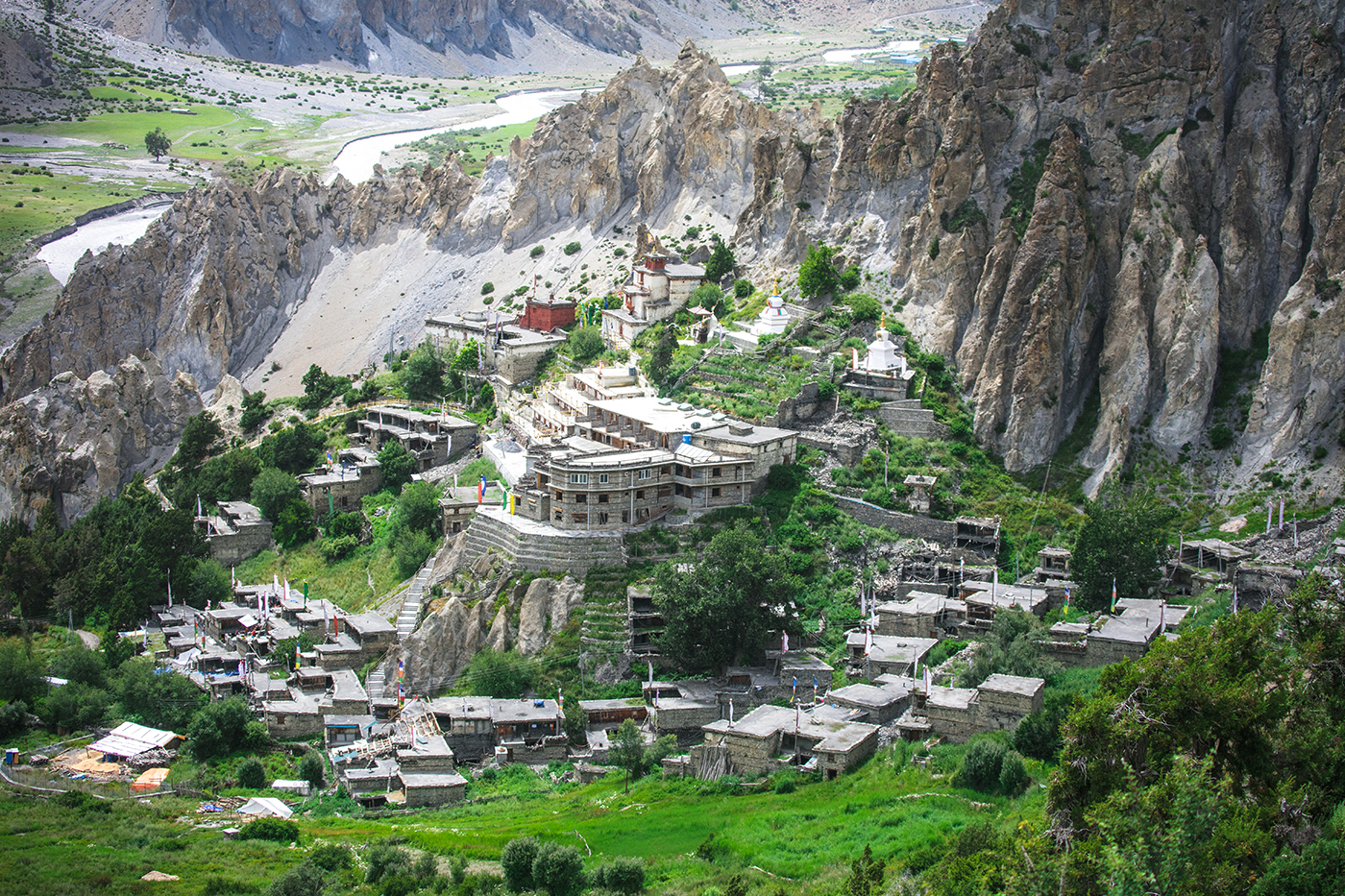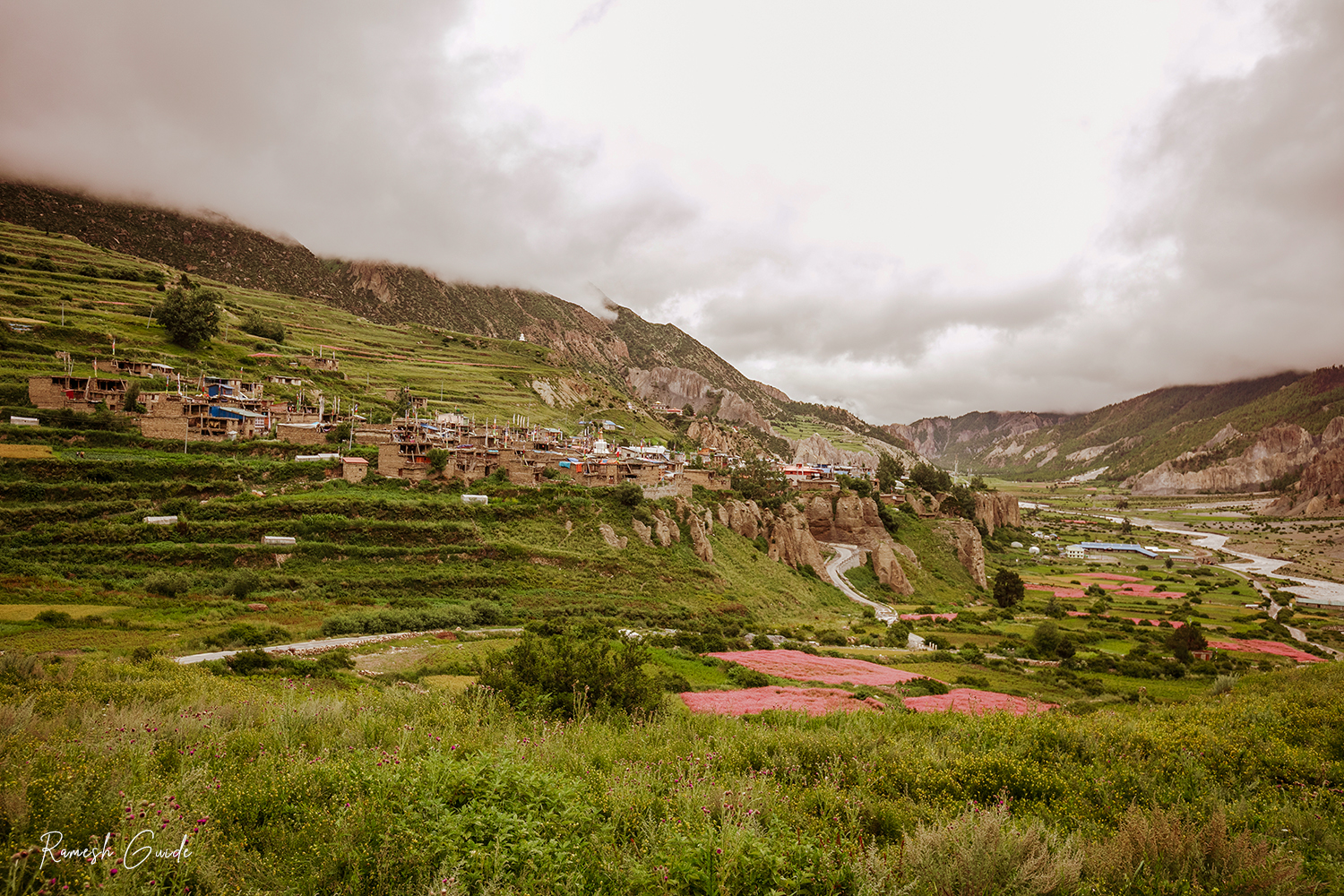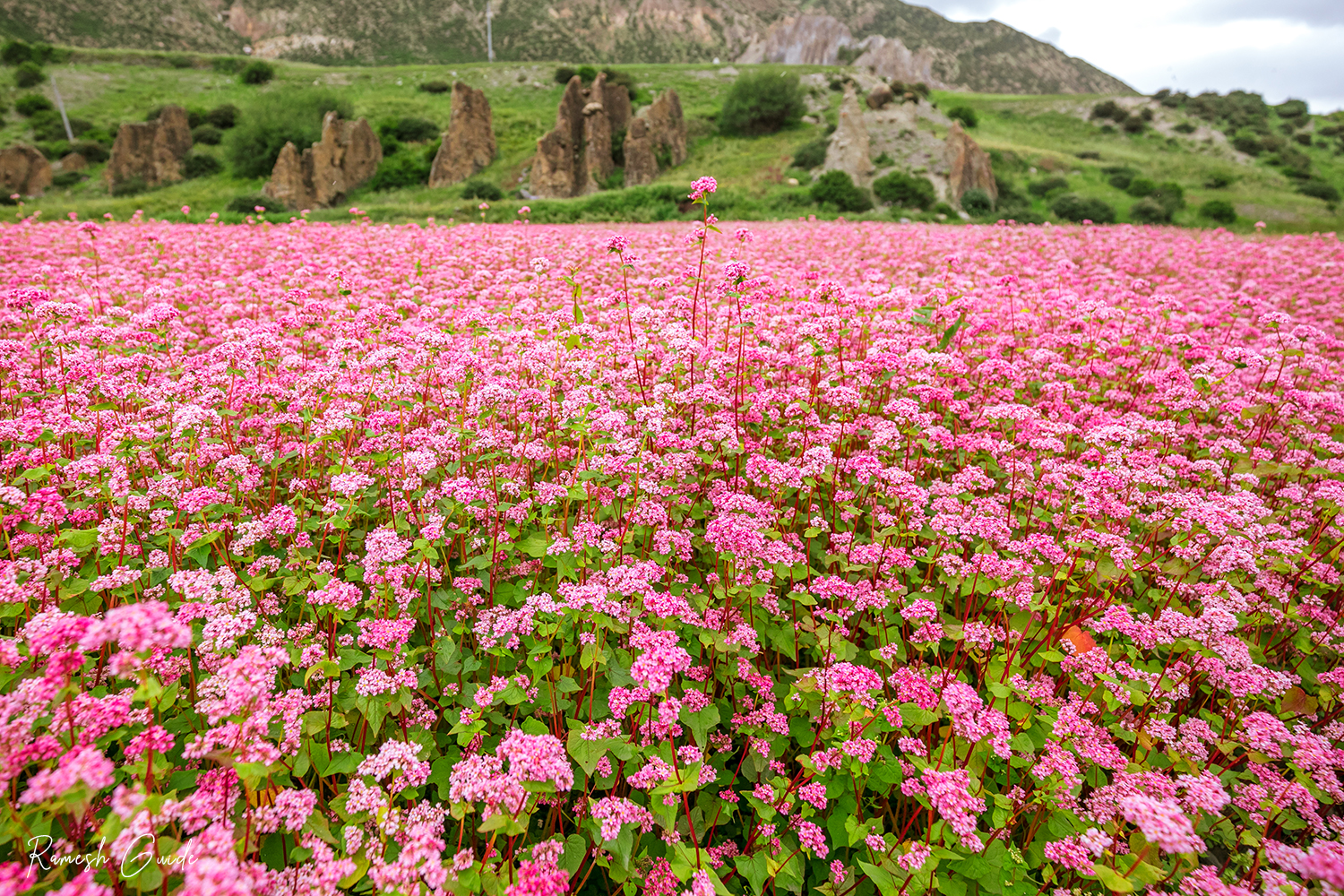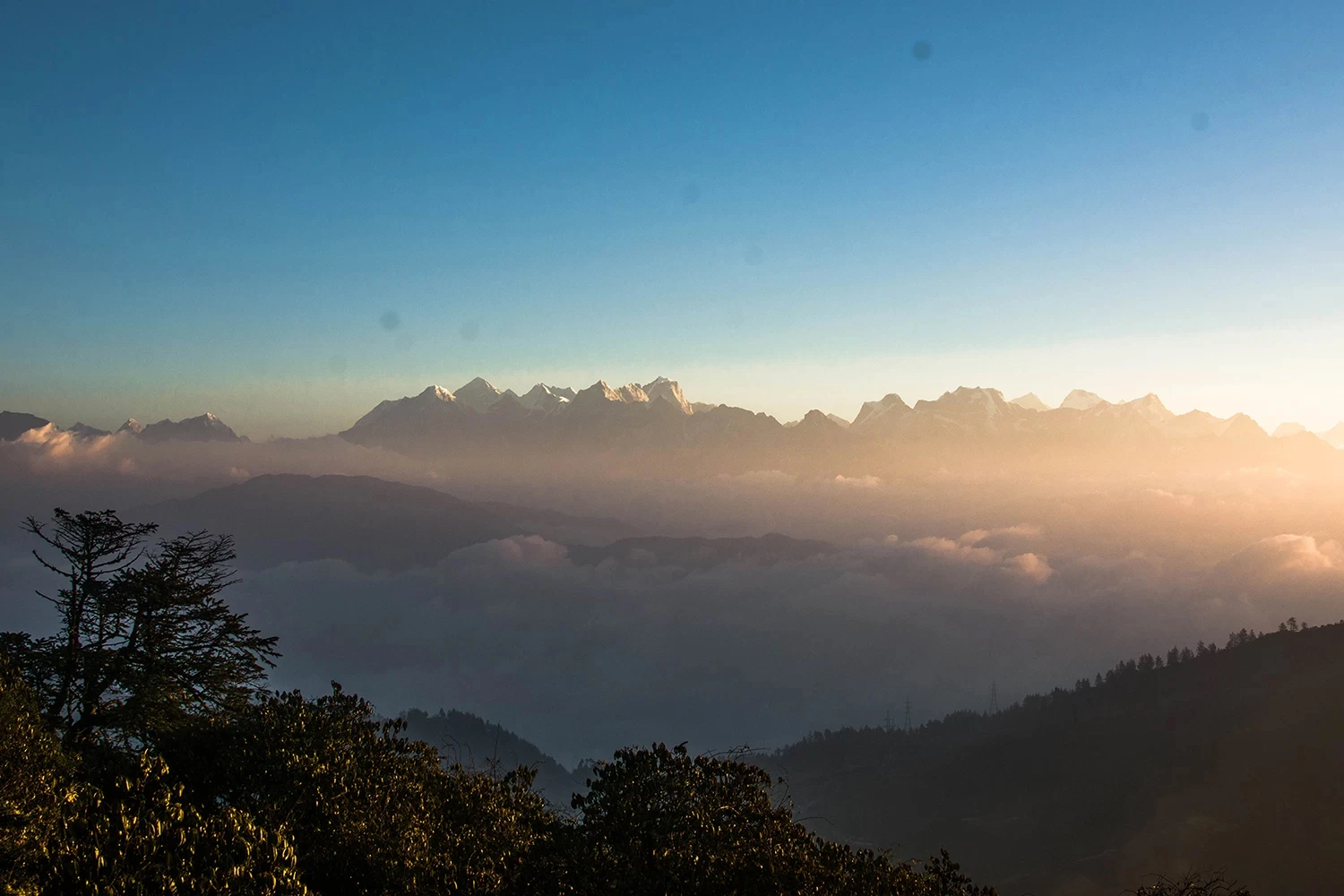Most travellers visit the Himalayas in autumn and spring, drawn by clear skies and pleasant weather. However, these seasons can be crowded, with everyone flocking to the same places at the same time. While autumn and spring are popular, many miss out on the stunning beauty of the Himalayas in summer.
Summer in the lower Himalayas can be challenging due to heavy rainfall, but the upper regions and areas beyond, such as the Manang Valley, offer a unique and breathtaking experience.

Manang Valley is renowned for its spectacular mountain scenery, being part of the Annapurna Circuit trek. The valley is special because the mountains rise directly from the valley floor, which sits at an average elevation of 3,400 meters (11,000 feet). Manang is surrounded by towering peaks over 6,000 meters (20,000 feet) high, making it a sight to behold.
In addition to its stunning landscapes, Manang is home to a variety of birds and animals, including the elusive snow leopard and Himalayan Blue Sheep.

Here’s why visiting Manang Valley in summer is worth considering:
- Lush Greenery: During summer, the entire Manang Valley transforms into a vibrant green paradise, making it incredibly attractive.
- Blooming Flowers: The valley comes alive with blooming flowers, particularly buckwheat flowers, creating a heavenly scene that gives the valley a pinkish hue.
- Diverse Weather: Summer in Manang offers a mix of weather conditions—cloudy, rainy, foggy, and clear skies. When the sky clears, the snow-capped mountains look stunning.
- Photographer’s Delight: For photographers, summer is the perfect time to capture the diverse landscapes of Manang Valley, with its rich colours and dynamic scenery.
Manang Valley is now connected by a road that passes through Besisahar. However, the narrow, bumpy off-road route along steep cliffs may not be enjoyable for everyone. Unofficially, the district is divided into Upper and Lower Manang. In Upper Manang, the local culture, language, lifestyle, and clothing are heavily influenced by the Tibetan plateau, while in Lower Manang, the locals share more similarities with their neighbours in Lamjung. The first settlement you’ll encounter upon entering Manang district is Talgaun, situated 1,700 meters above sea level.

Experiencing the full essence of Manang requires more than one visit. However, there are key places to see and things to do on your first trip that will give you a solid understanding of this mountainous district.
Trek to Tilocho Lake
Tilicho Lake, an alpine gem at 4,919 meters above sea level, is a must-visit for anyone trekking through Manang. Part of the Annapurna Circuit Trek, the Tilicho Lake trek begins after a three-hour, 31 km drive from Chame to Khangsar. Before starting the trek, it's recommended to spend a night in Khangsar, an old village that offers a glimpse into a simpler past with its traditional stone houses. From Khangsar, it’s a five-hour trek through Shreekharka to Tilicho Base Camp. The challenging trail rewards trekkers with breathtaking views of the Annapurna range, Manaslu, and Gangapurna. Solo trekking is not advised; it’s best to travel with a guide or experienced trekker. Most trekkers camp overnight at the base camp before making the six-hour trek to the lake the next day.
Attempt the Thorong La Pass
The highest point on the Annapurna Circuit Trek at 5,416 meters, located between Manang and Mustang. Opened to foreign tourists in 1977, the pass attracts thousands of trekkers annually, including an increasing number of domestic tourists. High-altitude trekkers typically cross Thorong La from Manang, spending a night in Thorong La Phedi and another in Yak Kharka before the ascent. The trek from Manang to Thorong La Phedi takes about two days, passing through Yak Kharka and Ledar, with early starts necessary to avoid the strong afternoon winds.
Find Milarepa Cave
Milarepa Cave is a hidden gem along the Annapurna Circuit Trek, located at 4,250 meters above sea level in northern Nepal. This cave, associated with the Tibetan Buddhist philosopher Milarepa, is a lesser-known but must-visit site in Manang. Although geographically isolated, the journey to the cave offers extraordinary landscapes. According to local legend, Milarepa once saved a deer from a hunter here, reforming the hunter’s ways. The cave is just two hours from Bhraka village and features a 10-foot deep chamber with a statue of Milarepa in meditation. Nearby, you'll find a spring, a gompa, and the hunter's bow, still preserved near the cave.
TOP TIPS:
HOW TO GET THERE: Visitors can reach Manang by trekking from Besisahar, Jagat, Dharapani, or Chame, or by taking a jeep along the road from Besisahar. Besisahar is 180 km from Kathmandu and 110 km from Pokhara.
WHERE TO STAY: There are around 150 hotels and lodges throughout the district. In Manang village, consider staying at Hotel Yeti, Hotel Tilicho, or Hotel Gangapurna.
WHAT TO EAT: Try the local Nepali rice set or buckwheat dhindo with timmur ko chhop. Western and Asian dishes are also available on most menus.
If you want to visit the Manang Valley, you'll need 7-16 days, including a visit to Tilicho Lake and the Annapurna Circuit Trek. The duration depends on your time frame and budget.
Experience the true essence of the Himalayas by visiting Manang Valley in the summer - a hidden gem waiting to be explored.



